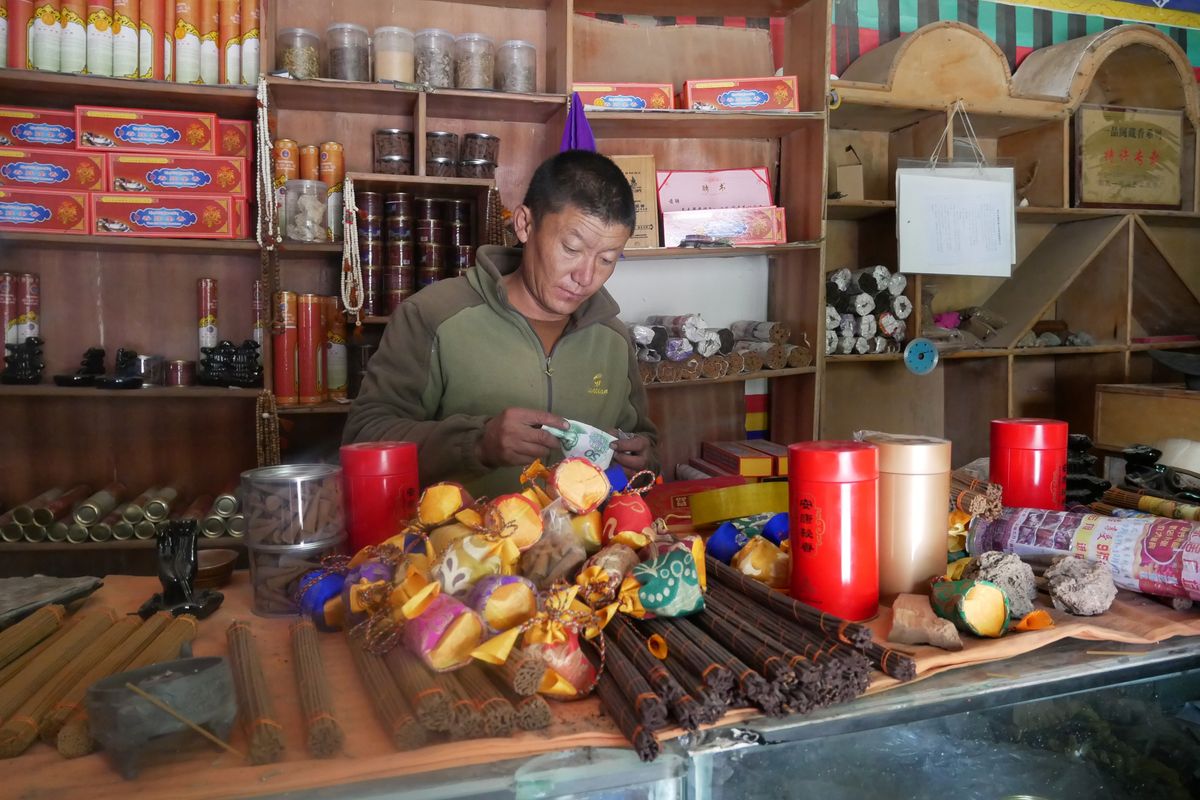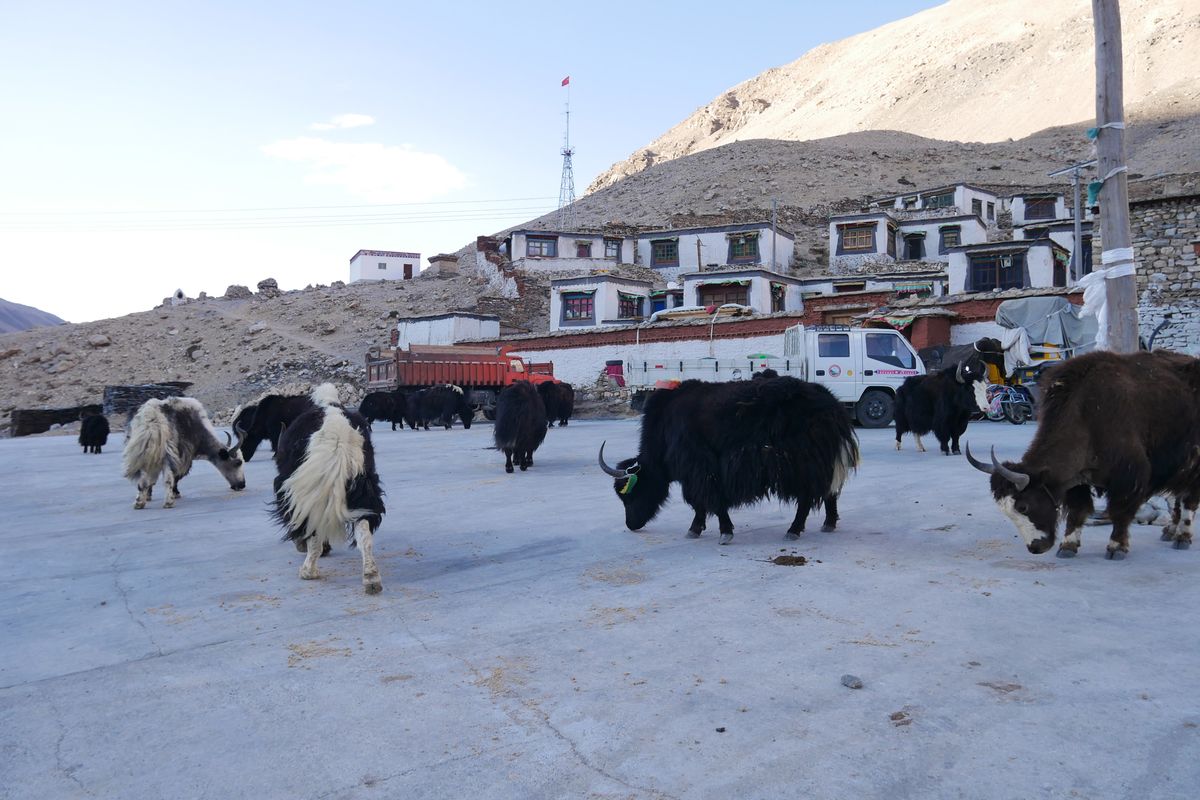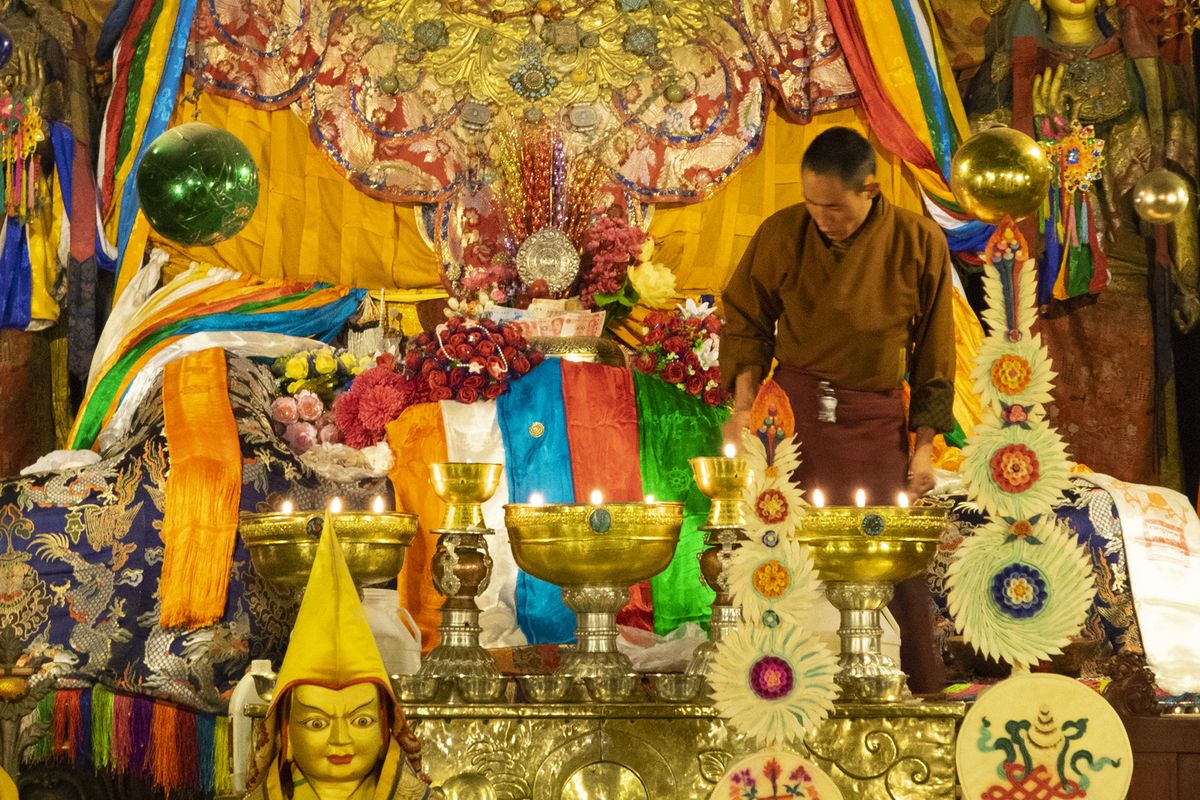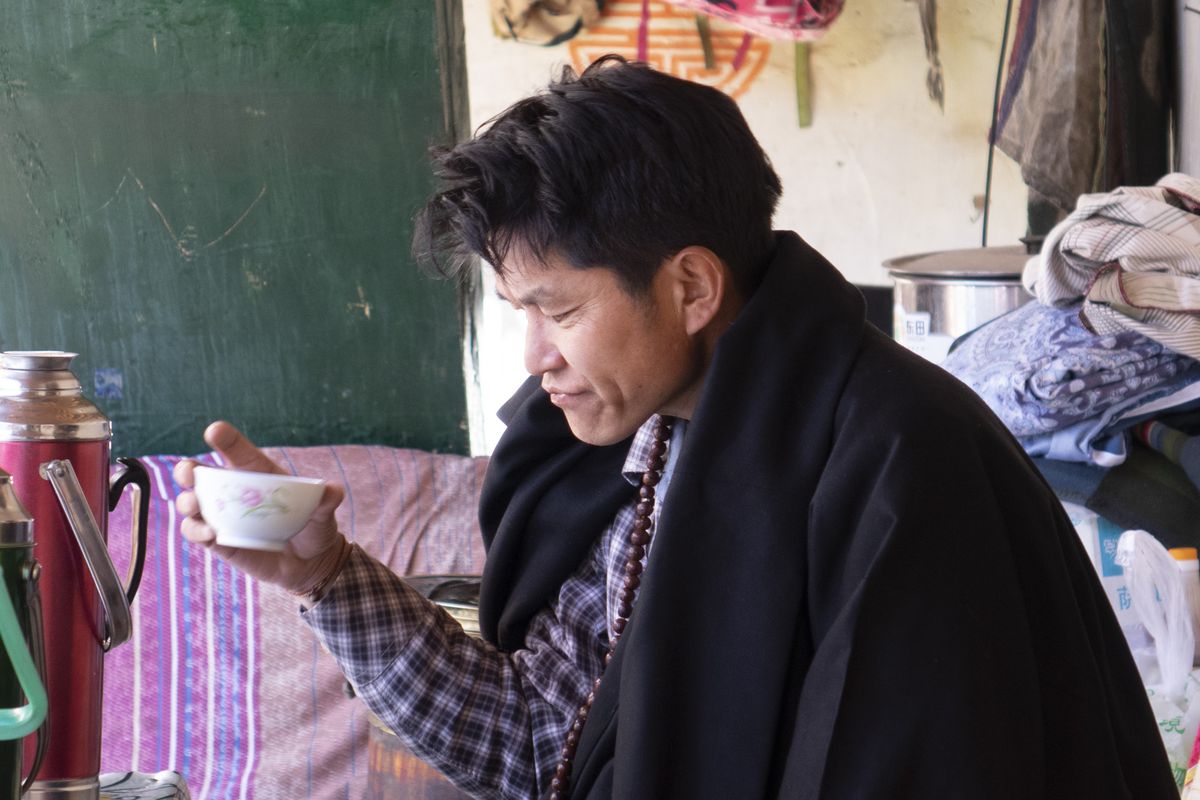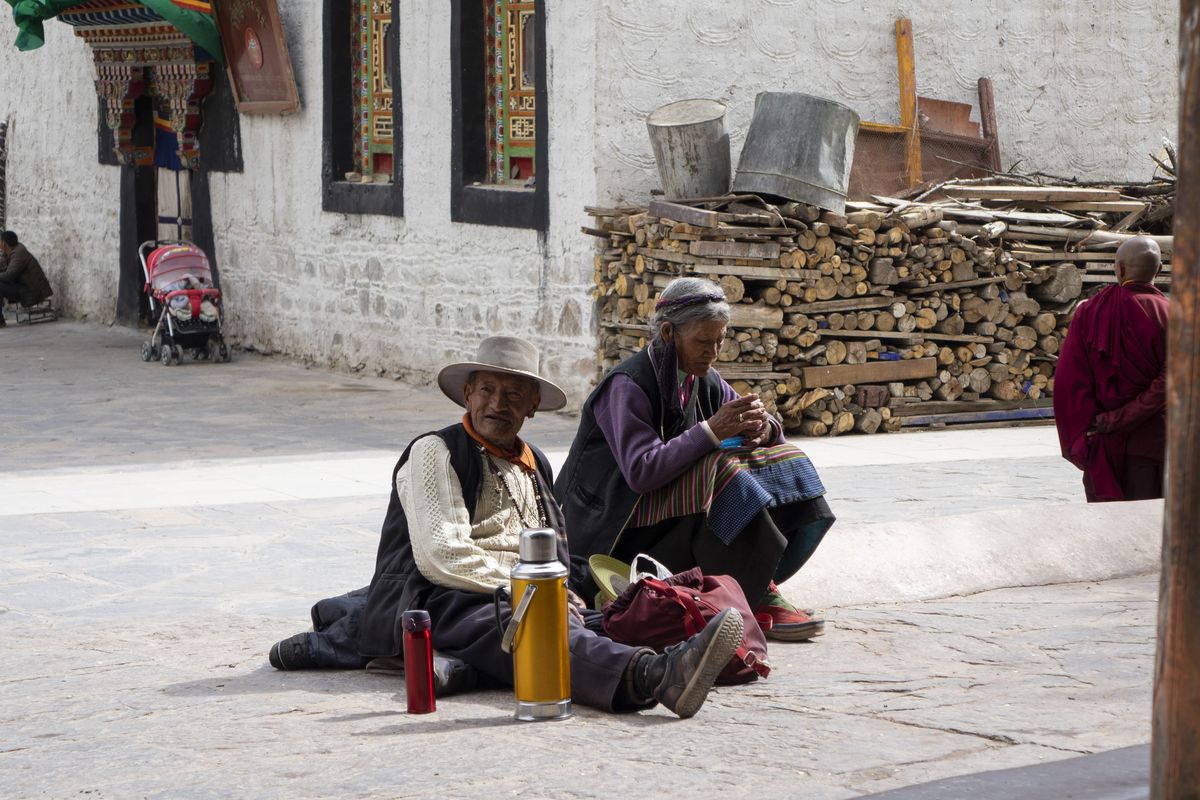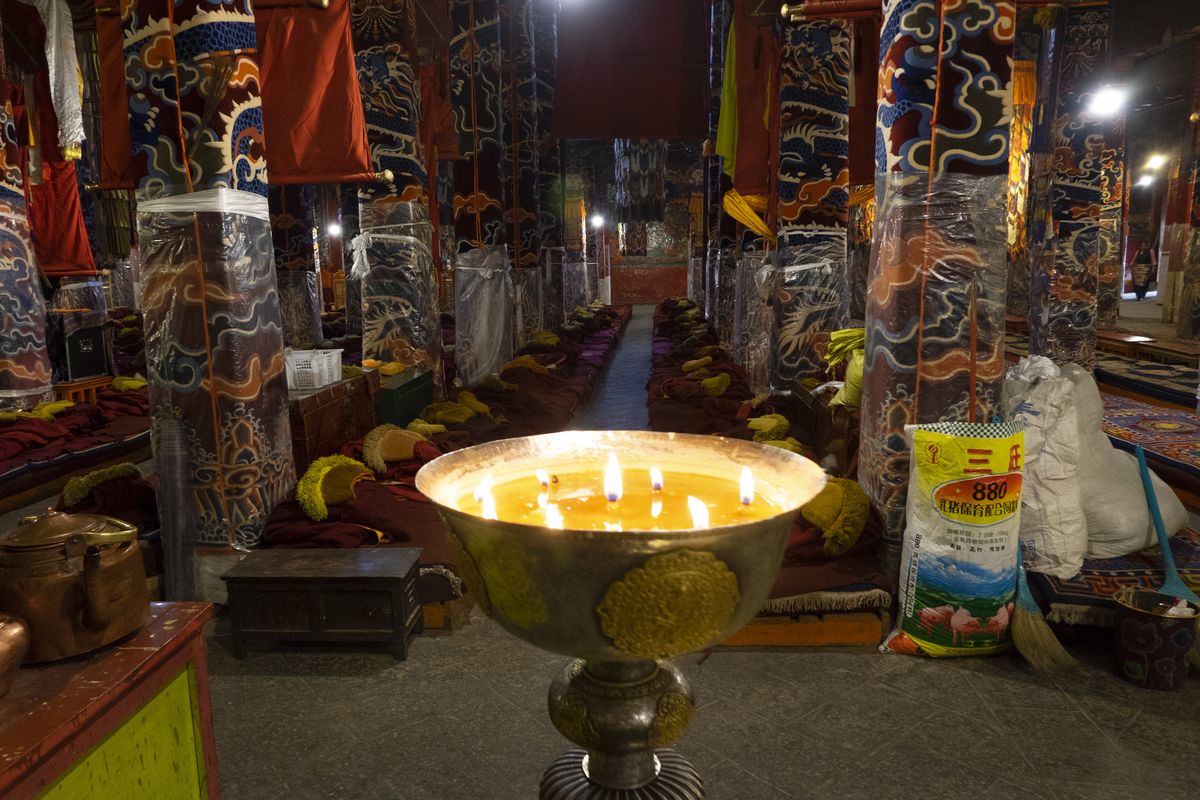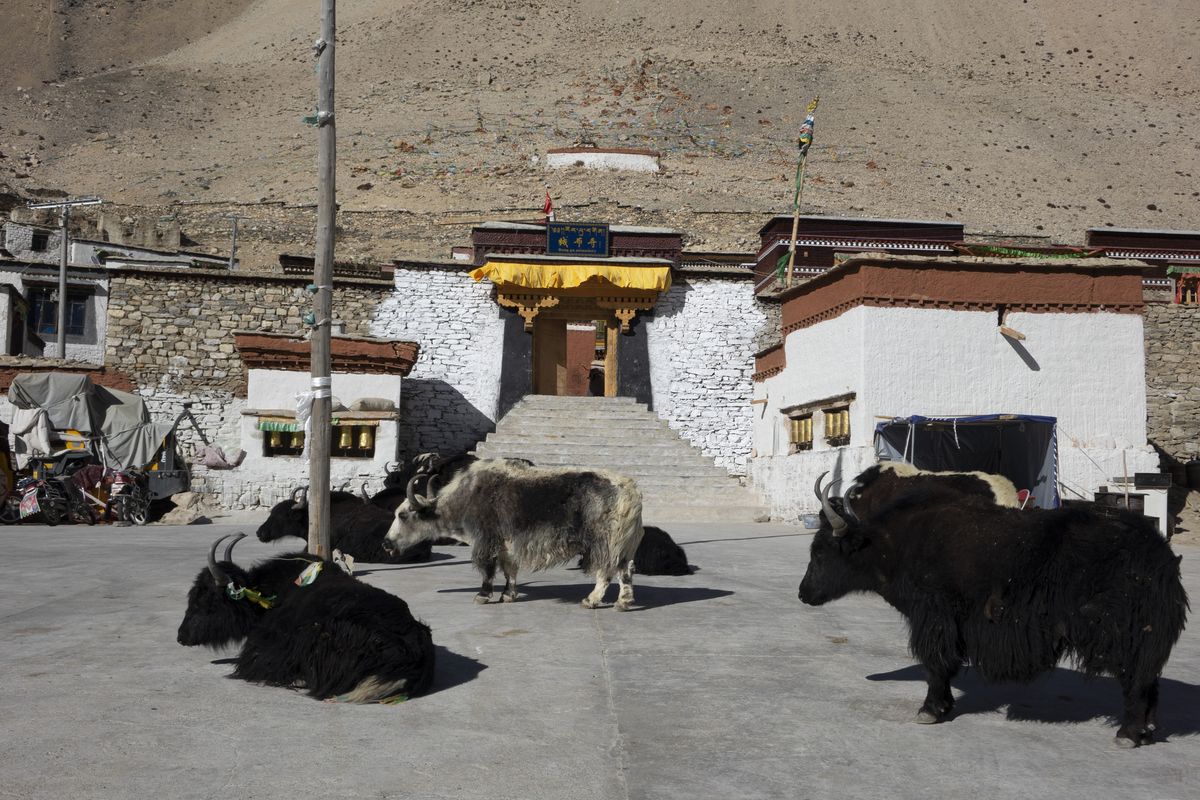Why is Tibetan butter such a big deal?
by Guest author
Image gallery
Wherever we travel in Asia, we find flavours that vividly evoke the culture, history and landscape of the places we visit. In Tibet, one of these unique tastes is Tibetan butter, which is the ultimate food hero of this enigmatic region, and eaten everywhere from Lhasa to the foothills of Mount Everest. You’ll find it in everything from tea to oil lamps... but what exactly is Tibetan butter, and what makes people go misty-eyed at the thought of it?
What is Tibetan butter?
Made from the milk of the dri (that’s ‘female yak’ to you and me) which graze across Tibet’s mountainous landscape, Tibetan butter - ‘mahr’ - is a staple food of rural communities. In summer, when the dri produce the most milk, the rich fats are preserved to create this unique butter, which lasts for a year.
Mahr, which is often sold in loaves or rounds that look like cheese, has the familiar smooth texture and creamy whiteness of cows' butter, but with a certain sour nuttiness reminiscent of goat’s or sheep’s milk products. The stores of butter become ready sources of fuel for when the body is battling to make heat during the fiercely cold, high altitude winters. This need to supplement the high altitude diet with fat gives rise to mahr being added to pretty much anything, hence finding it in many foods that Westerners might not associate with being ‘buttered’!
How to eat Tibetan butter
Butter tea
Although ‘bulletproof’, or buttered, coffee took the caffeine-drinking world by storm a few years ago, its sister drink of butter tea is yet to have its world-wide five minutes of fame. Butter tea, or po cha, is the Tibetan drink of choice - some say it’s drunk more often than water!
Perhaps best described as having a salty flavour like a light broth, rather than the tannin-rich infusion one might expect from a tea, po cha is an unmistakeable taste which takes you immediately to Tibet. It’s a unique - some would say ‘acquired’! - taste. Some people find instantly delicious, while others need to get used to it. You just have to try it yourself, and see what you think!
Although quicker versions are becoming increasingly popular, the traditional preparation of po cha takes a long time and dedicated effort. Black tea leaves, or crumbles of smoky tea bricks, are boiled in water for half a day, producing an intense, dark brown reduction which is vigorously shaken with the yak butter and salt to produce a rich, savoury drink. A slightly lighter version is made by allowing the leaves to stand in freshly boiled water until the liquid is as dark as it can get, then adding the salt and a generous spoonful of mahr, and churning hard to combine them. The traditional wooden churns are often highly decorative objects in their own right, reflecting the reverence given to the tea itself... but the easiest way to achieve the right consistency these days is simply to whizz it all up in a blender!
Certain rituals and social etiquettes have sprung up around this much-loved beverage, which are worth being aware of as a visitor. Being offered a cup of this iconic brew is a sign of being given a warm welcome, and it is polite to accept graciously whether you’re thirsty or not. In some places, it’s considered rude for a host to let their guests’ cups be anything less than full to the brim, so don’t be surprised if you find yours being refilled after every sip! Aside from its high calorific benefits, the butter tea is also said to help prevent chapped lips (a common high altitude effect), is a popular digestive aid, and even rumored to help focus the mind and strengthen the heart (but we’re not medical professionals, so we can’t verify that!).
Tsampa
Tsampa, one of Tibet’s key dishes, is made from roasted wheat or barley flour mixed to a dough with butter tea. Traditionally, after enjoying a hot cuppa, a spoonful of tsampa flour is added to the dregs of butter tea left in the bowl. The mixture is then absentmindedly kneaded with the fingers as conversation continues, until a small dumpling has formed which is popped straight into the mouth as a sustaining snack.
A heartier meal is made by mixing tsampa flour with a larger amount of butter tea to a porridge-like consistency, which has that milky, nursery-like comfort of all base carbs.
Tsampa has developed a greater significance than simply sustenance, and is a key part of several Tibetan religious ceremonies and cultural festivals. Tsampa mixed with dates and sesame seeds is often given as a snack to welcome guests upon arrival, and if you get a toothache on your travels, you could be offered a ball of tsampa dough mixed with cumin to press to the offending fang and soothe the pain. In addition, thanks to its quick-release, high energy properties, tsampa has become the fashionable Tibetan equivalent of super-healthy nut and seed energy balls. In short, you’re unlikely to visit Tibet without trying some!
Other uses...
Aside from ingesting it at mealtimes, mahr crops up in other areas of Tibetan life too. You’ll find clarified mahr being burnt as a fuel in the beautifully crafted, goblet shaped metal lamps in most temples and monasteries. Within Tibetan Buddhism, the fumes of the burning butter are believed to help clear the mind for meditation, and pilgrims to Tibetan monasteries can gain merit by offering lamp butter as a gift. Aside from its sacred use, mahr is also said to make a terrific moisturiser, which could be useful for countering the harsh effect of the Himalayan wind on the skin. But perhaps its most extraordinary guise is at Losar (Tibetan New Year) in February or March, when the butter is dyed bright colours and carved into breathtaking statues which can be over 10 metres high!
Speak to one of our Tibet Specialists on +44 (0)1273 670 001, or send us your enquiry.
by Guest author on 9th May 2019
